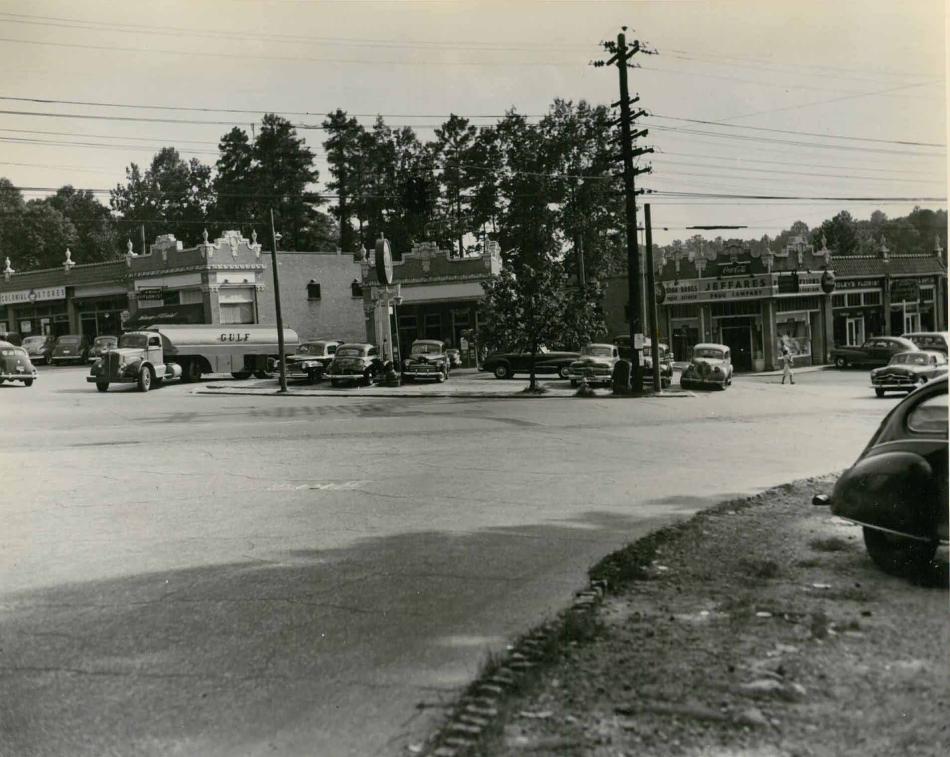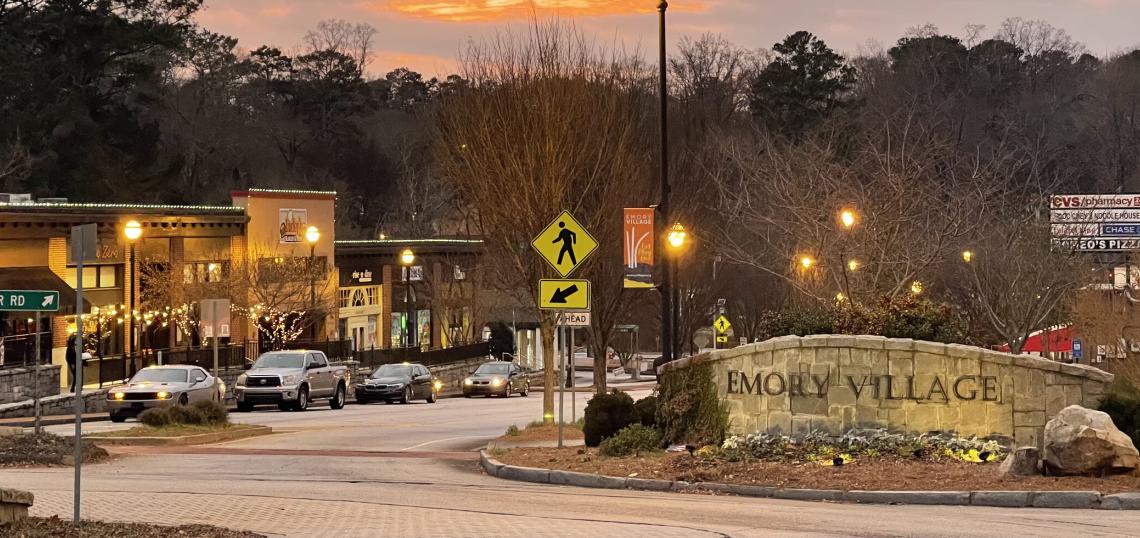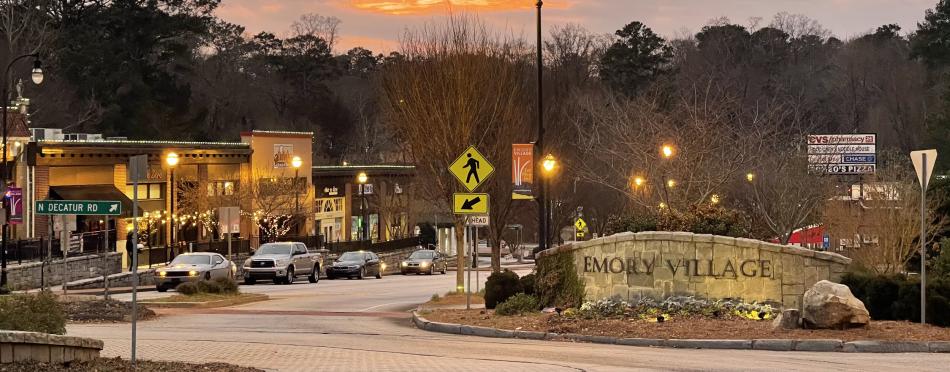In a city bloated with forgettable shopping centers, visitors to Emory Village may have found themselves charmed by its historic storefronts, functional roundabout, effortless walkability, and pathways to a prestigious university just steps away.
But government leaders, neighboring residents, and village stakeholders believe it could all be much better. And they’ve recently made zoning changes in hopes of setting that in motion.
After a three-year campaign that included gathering input from hundreds of people, the nonprofit organization Emory Village Alliance has succeed in having a new zoning overlay for the village unanimously approved by DeKalb County’s District 2 Planning Commission and the Board of Commissioners.
As EVA rep Mark Goldman relayed earlier this month, the broad goal of the zoning revision is to spur mixed-use redevelopment of non-historic sections of the village deemed to be underused today, resulting in a commercial and housing hub “envisioned to be a bit like a miniature version of downtown Decatur.” That is, new buildings standing three to four stories with condos, apartments, and offices over street-level restaurants and shops.
Examples “from around the world indicated that this approach would help revitalize the village,” Goldman wrote.
Quick history: The EVA was founded in 2001 with a goal of breathing live-work-play life into the village.
An initial zoning overlay was put in place six years later, which led to “substantial improvements to public spaces.” Those included an eye-pleasing roundabout in place of a chaotic five-way traffic light, new crosswalks and sidewalks, dozens of street trees, and a fresh plaza with a fountain and sculpture built from old trolley tracks uncovered in village streets, per Goldman.
What didn’t materialize: developer investment on properties deemed non-historical.
 Emory Village circa 1945, as seen from the university’s campus gate, with a building later occupied by Everybody’s Pizza (R.I.P.) in middle. Stuart A. Rose Manuscript, Archives, and Rare Book Library; via Emory Historian’s Blog
Emory Village circa 1945, as seen from the university’s campus gate, with a building later occupied by Everybody’s Pizza (R.I.P.) in middle. Stuart A. Rose Manuscript, Archives, and Rare Book Library; via Emory Historian’s Blog
Backed by DeKalb commissioners and the Department of Planning and Sustainability, EVA leadership set out to remove unnecessary barriers to the sort of mixed-use, pedestrian-oriented growth popping up across the ITP landscape.
Goldman notes that nothing has changed regarding scale restrictions—buildings taller than four stories are still not allowed—at least as exteriors go. The village’s boundaries will also remain the same.
Specific changes to the overlay were outlined as follows:
- Allowing a few townhouses/rowhouses on the village’s edges next to existing single-family homes;
- Eliminating square footage requirements for apartments, condos, and offices;
- Allowing a food hall, a yoga studio, a day spa, a tutoring center, and centers for research;
- Permitting rooftop dining on the second, third, or fourth levels;
- Further encouraging offices for attorneys, therapists, optometrists, and similar, primarily on the second floor;
- Prohibiting tattoo parlors, cigar bars, and smoke and vape shops (however the existing one is “grandfathered”);
- Slightly reducing parking requirements, with most new parking in structures behind multi-story buildings.
Will the changes help propel Emory Village into becoming a denser housing hub and bona fide destination? Will current interest rates and other turbulence in the real estate world be an impediment? Only time will tell.
...
Follow us on social media:
Twitter / Facebook/and now: Instagram
• Emory news, discussion (Urbanize Atlanta)








